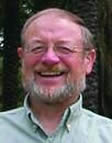Aerobiological Methodology: Limits and Uses of Viable Testing
By Bryce Kendrick, PhD, DSC, FRSC
From Bioscience World, Autumn 2005
IN GENERAL, TECHNIQUES OF INVESTIGATIVE MOULD SAMPLING are divided into two main categories, which indicate two very different approaches to the problem of finding out what is there and what it might be doing. These are called ‘viable’ and ‘non-viable’ sampling methods.
The term ‘viable’ is used in the aerobiological context to describe propagules (whether spores, spore-bearing structures or hyphal fragments) which will germinate and grow on some common laboratory media (and sometimes, by extension, inside people whose immune systems are deficient or compromised). These propagules are often collected by drawing air onto the surface of a plate (Petri dish) containing a solid nutritive medium.
It is clear that the so-called ‘viable’ methods will detect only a fraction of the spores in the air that are actually viable, that many of the visually identifiable spores in the air are actually non-viable, and that the results of such methods, unsupported by other approaches, is bound to be misleading. There are situations in which it matters whether the spores are alive.
These are:
- In hospitals, where patients may be either immunocompromised, or immunosuppressed as a result of their medical condition or their treatment, or
- In the homes of immunodeficient people. In those cases, mould spores belonging to thermotolerant or opportunistic species may be able to establish themselves within the patient and lead to serious illness and even death.
There are several situations in which ‘viable’ and ‘non-viable’ methods can be truly complementary.
- Perhaps the most important is the ability of culturing to resolve Penicillium from Aspergillus, and to be precise about the species involved. Identification of, for example, Aspergillus fumigatus (which can cause disease in humans), may be very important.
- If spores in samples are proven to be viable, at least some of those spores may remain viable for an extended period, and can affect future sampling.
- Certain kinds of spores, especially those which are small and colourless, are often difficult or impossible to identify visually.
- In some situations it may be helpful to know which species of a particular genus are present inside and outside a building.
It is clear that both ‘viable’ and ‘nonviable’ methodologies are valuable.
For the sake of clarification, I would like to see the term ‘viable’ replaced by ‘culturable’. I would also like to drop the term ‘non-viable’, and call such tests ‘broad-spectrum’.
![]()
Bryce
Kendrick, |
Author of twelve
books including The
Fifth Kingdom, three textbooks and over 300 other publications, Dr. Kendrick is Technical Advisor for Aerobiology Laboratory Associates, Inc. |
![]()
For More Information Contact:
Bioscience International
11333 Woodglen Drive
Rockville MD 20852
Tel: 301-231-7400
FAX: 301-231-7277
Internet: BioInfo@Biosci-Intl.com

